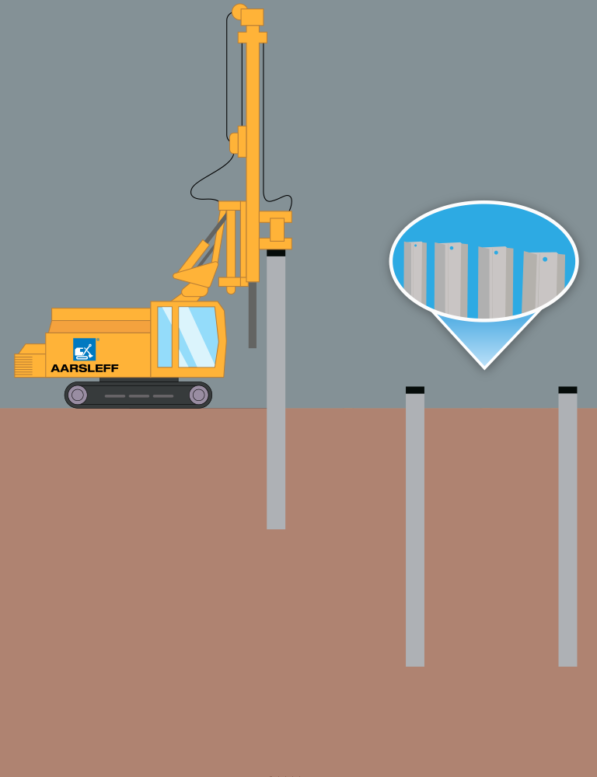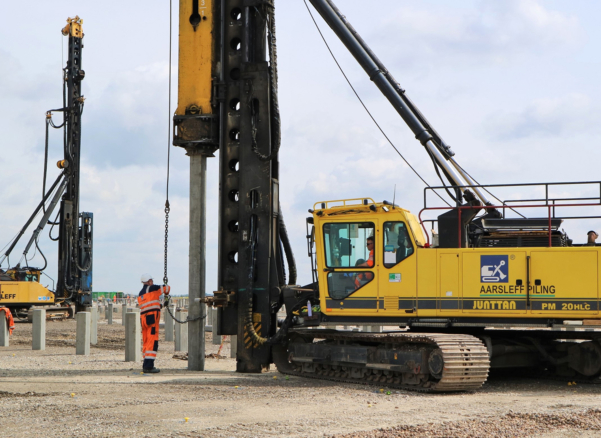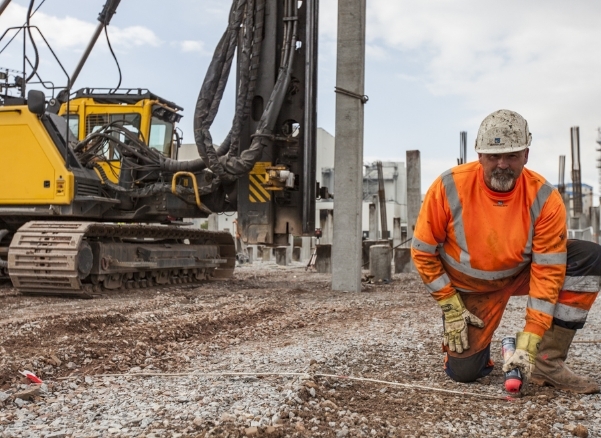What Are H-Section Piles?
Table of Contents
- About H-Section Piles
- What Is The Difference Between Sheet Piles and H-Piles?
- How Are H-Section Piles Installed?
- Benefits of H-Section Piles
About H-Section Piles
H-Section piles, also known as H-piles or H-beams, are structural square beams that are shaped like the letter ‘H’ in profile. These piles are widely used to add stiffness and support to sheet pile walls, King Post Walls and other deep foundations. H-piles are made from steel and available in different sizes for various project needs.
H-Section piles are particularly effective due to their high bending resistance and strength, which make them suitable for heavy loads and expansive soils. They are commonly employed in the construction of bridges, docks, and large buildings, where a deep foundation is critical for structural integrity. H-piles work well in both compression and tension, allowing them to handle the lateral forces and vertical loads associated with complex engineering projects.

What Is The Difference Between Sheet Piles and H-Piles?
Sheet piles and H-piles are both commonly used in construction for providing structural support, particularly in foundation work and earth retention. Sheet piles, typically made from steel, are narrow sheets with interlocking edges that are driven into the ground to form continuous barriers. They are primarily used to retain soil or water in excavations and prevent erosion or water ingress.
Steel H-piles are driven into the ground to serve as load-bearing supports. They efficiently transfer heavy loads from structures above to layers of soil or rock that have sufficient bearing capacity. Unlike sheet piles, H-piles are mainly used for deep foundation applications, such as supporting large bridges and buildings, rather than for creating barriers. [1]
How Are H-Section Piles Installed?
The installation of H-Section piles includes the following steps:
- Site Preparation – The installation site is cleared of any debris, and the ground is levelled. This preparation is crucial for the stability of heavy machinery used during the installation process.
- Pile Positioning – Each H-Section pile is positioned precisely where it needs to be driven into the ground. This is usually determined by engineering plans and site measurements. A piling rig is used to carry and manoeuvre the piles.
- Driving the Pile – The piles are driven into the earth by pile-driving equipment such as a vibratory hammer. [2] The tough and durable cross sections provide excellent driving characteristics when driving in difficult soil and rock conditions.
- Cutting to Size – Once the pile is driven to the required depth, it may need to be cut to a specific height to align with the design requirements of the structure it will support.
- Capping – After cutting, a cap is often placed on top of the piles to distribute the load evenly across the pile’s surface when the structure is built on it.

Benefits of H-Section Piles
Once installed successfully, steel H-piles offer many benefits for construction projects such as:
- Suitable for uncertain ground conditions
- Can be driven deeper than precast piles to depths of 50 meters or more
- They are easy to adapt to unforeseen soil conditions, along with being able to be driven through obstructions and hard ground conditions
- Can be driven using minimal vibration driving methods
- Can come in a wide variety of sizes to suit the conditions
Sources
- Eiffel Trading. (n.d.). Eiffel 101: The Four Types of Steel Pile. Retrieved on 3rd February 2025, from:
https://www.eiffeltrading.com/blog/post/eiffel-101-the-four-types-of-steel-pile - Interpipe Inc. (2024). The H Pile: A Silent Workhorse of Construction. Retrieved on 3rd February 2025, from:
https://interpipe.com/2024/04/14/the-h-pile-a-silent-workhorse-of-construction/








